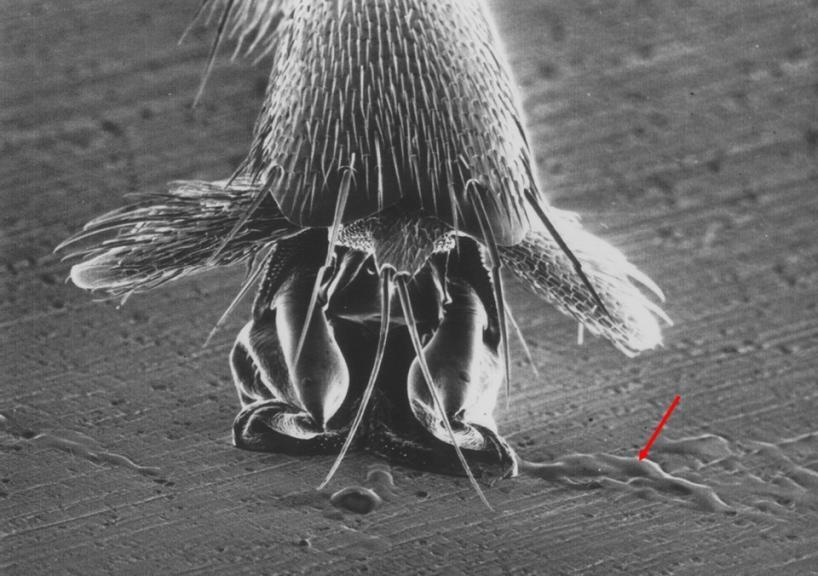
Lead supervisor: Walter Federle, Zoology
Co-supervisor: Rebecca Kilner, Zoology
Brief summary:
How can insects maintain water-proofing, lubrication and adhesion at different temperatures?
Importance of the area of research concerned:
Insects wear a multifunctional suit on their body surface - a thin film of lipids that fulfils many important biological tasks. Insect cuticular lipids not only serve as a vital barrier against desiccation, but are also essential for chemical communication, and have biomechanical functions such as surface adhesion and joint lubrication. How can this lipid layer perform so many functions at the same time?
All the biological functions of cuticular lipids depend on their physical properties, but the requirements are not the same for the different functions. Current models assume that waterproofing is based on crystalline lipids with a high melting point, whereas the other functions require lipids in a fluid state, resulting in potential conflicts. The cuticular lipid composition varies greatly across insects living in different environments, and insects can acclimate to different temperatures by changing their cuticular lipid composition within just a few days. It is still unclear how insects can maintain the different functions of cuticular lipids at varying temperatures (and in the face of climate change) and what selection pressures drive the evolution of cuticular lipid profiles.
Project summary :
This project aims to clarify how the insects' cuticular lipid layer can fulfil multiple functions including waterproofing, joint lubrication and surface adhesion. How do these functions depend on temperature, and are there trade-offs between them? The effects of the highly variable chemical composition of insect lipid films will be studied in insects covering a wide range of lipid profiles. Acclimation of insects to different temperatures will be used to induce predictable changes in lipid composition and study their effects. The insects' waterproofing, lubrication and adhesion performance will be studied under experimental manipulations of the lipid film, and related to measured physical properties (viscosity, melting behaviour) and chemical analyses of the lipid films. The project will gain insights into the adaptive value and selection pressures underlying this multifunctional trait.
What will the student do?:
The student will study cuticle's waterproofing function using evaporation and dye permeability measurements under a variety of experimental conditions (temperature, chemical and mechanical manipulations). The adhesion performance of insects will be measured in whole insects and single adhesive pads, while experimentally manipulating the cuticular lipid films. Using friction force measurements, the student will study to what extent lipids lubricate cuticular joints, and how lubrication depends on the lipid film's properties. The viscosity of small lipid samples will be measured using particle tracking micro-rheology, and their melting behaviour using microscopy techniques. In parallel with all these measurements, lipid samples will be collected for chemical analysis using GC-MS (in collaboration with Florian Menzel, Mainz). The student will study the effects of temperature and temperature acclimation on the lipid film's biological functions in selected insects, allowing an assessment of the effects of climate change on this multifunctional trait. The research is part of an HFSP-funded project and will involve regular exchange with an international team of collaborators.
References - references should provide further reading about the project:
Beament JWL (1958) The effect of temperature on the water-proofing mechanism of an insect. J. Exp. Biol. 35: 494-519
Dirks J-H, Clemente CJ & Federle W (2010) Insect tricks: two-phasic foot pad secretion prevents slipping. J R Soc Interface 7, 587-593
Menzel F, Morsbach S, Martens JH, Räder P, Hadjaje S, Poizat M & Abou B (2019) Communication versus waterproofing: the physics of insect cuticular hydrocarbons. J. Exp. Biol. 222: jeb210807
Applying
You can find out about applying for this project on the Department of Zoology page.